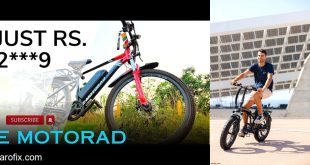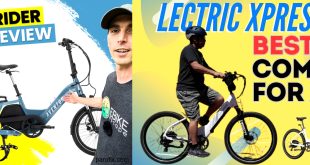Can You Build Your Own Electric Bike?
Imagine cruising through your city streets on a custom-built electric bike that fits your riding style perfectly, all while reducing your carbon footprint. Sounds fun, right? The good news is—you absolutely can build your own electric bike. And whether you’re a beginner tinkering in your garage or an experienced cyclist aiming for a high-performance machine, DIY e-bikes offer a rewarding mix of creativity, technical challenge, and sustainable commuting.
Why Build Your Own Electric Bike?
There are several reasons riders choose to DIY their electric bikes:
- Customization: Pick the motor, battery, and frame that suits your specific riding needs.
- Cost Control: Building can be cheaper than buying a premium e-bike with similar specifications.
- Learning Experience: Understanding how an e-bike works gives you confidence in maintenance and upgrades.
- Sustainability: Upcycling an old bicycle into an electric bike is environmentally friendly and reduces waste.
For example, I converted an old mountain bike into a mid-drive e-bike last summer. Not only did I save a few hundred dollars, but I also gained a deep understanding of how torque sensors and pedal-assist systems interact—knowledge I now use to help friends optimize their rides.
Essential Components for a DIY Electric Bike
Before grabbing a wrench, let’s break down the core components:
- Motor: Options include hub motors (front or rear) and mid-drive motors. Hub motors are simpler to install and handle casual commuting well. Mid-drive motors excel at hill climbing and balance.
- Battery: Lithium-ion batteries are standard. Key specifications include voltage (36V–48V) and amp-hours (10Ah–20Ah). A larger battery increases range but adds weight.
- Controller: The “brain” of your e-bike. It manages power delivery from the battery to the motor. Advanced controllers allow regenerative braking and customizable pedal-assist modes.
- Throttle and Pedal-Assist Sensor: Throttle gives you instant acceleration, while pedal-assist sensors adjust motor power based on your pedaling.
- Frame: Your existing bike frame can work, but stronger steel or aluminum frames are preferable for handling motor torque and battery weight.
- Brakes and Gears: Upgrade to hydraulic disc brakes if possible, and consider gearing that complements your motor’s torque curve.
Step-by-Step Guide to Building Your Own Electric Bike
Here’s a practical workflow:
- Select Your Base Bike: Choose a sturdy bike frame suitable for your riding style. I once used a 2015 mountain bike for my conversion; it handled city commutes and weekend trails perfectly.
- Choose Motor Type: Hub motors are easier for first-timers. Mid-drive motors are ideal for hill-heavy routes.
- Battery Placement: Common options are frame-mounted, rear rack-mounted, or integrated downtube batteries. Placement affects balance and aesthetics.
- Install Controller: Usually under the seat or on the frame. Connect it carefully to motor, battery, and sensors.
- Install Pedal-Assist Sensor and Throttle: Calibrate the sensor so motor power matches your pedaling effort.
- Test and Tune: Check braking, throttle response, and pedal-assist modes. Adjust settings for smooth power delivery.
- Final Touches: Add fenders, lights, or cargo racks. Safety first!
Tip from my experience: double-check torque settings on all bolts, especially around the motor and battery mounts. Loose fittings can lead to mechanical failures or dangerous riding situations.
Technical Details to Consider
- Voltage and Current: Higher voltage batteries deliver more speed and power. Example: A 48V system with 20A current can generate approximately 960W peak power.
- Torque: Mid-drive motors often provide 60–100 Nm of torque, ideal for climbing steep urban hills or off-road trails.
- Range: Determined by battery capacity and riding style. For instance, a 48V 15Ah battery can realistically deliver 60–80 km on mixed terrain.
- Weight Distribution: Frame placement matters. Heavy batteries on rear racks can destabilize handling; center-mounted batteries improve balance.
Practical Tips for DIY Builders
- Start Simple: Beginners should try a front hub motor conversion first; it’s straightforward and safe.
- Upgrade Gradually: Begin with essential components and add performance upgrades later.
- Read Manuals and Forums: Online communities are goldmines for wiring diagrams, troubleshooting, and hacks.
- Safety First: Wear protective gear and ensure all wiring is insulated and secured.
- Test Incrementally: Don’t max out speed on your first test ride. Start slow and gradually push limits.
My Personal DIY e-Bike Story
One memorable project involved converting a vintage 1980s road bike into a sleek urban e-bike. The frame was lightweight but delicate, so I opted for a low-power rear hub motor. After a weekend of soldering wires, mounting the battery, and tweaking the pedal-assist sensor, I took it on its first city commute. Not only did I shave 20 minutes off my route, but I also felt a genuine sense of achievement. The bike became my daily ride for six months, proving that with patience and careful planning, DIY e-bikes can rival commercial models in usability and fun.
The Sustainability Factor
DIY electric bikes are inherently eco-friendly. Some key points:

- Converting old bicycles prevents them from ending up in landfills.
- Electric commuting reduces car dependency and CO2 emissions.
- Modular DIY systems allow easier upgrades, reducing the need for full replacement.
- Future e-bike tech is trending toward more sustainable materials, such as recycled aluminum frames and bio-based batteries.
Frequently Asked Questions
Do I need advanced technical skills to build an e-bike?
No. Beginners can start with hub motor kits and follow step-by-step tutorials. Mid-drive conversions require more mechanical and electrical understanding but are manageable with research and patience.
How much does it cost to build your own electric bike?
Costs vary widely. Basic conversions start around $400–$600, while high-performance builds with mid-drive motors, large batteries, and upgraded components can exceed $2,000. DIY can still save money compared to high-end commercial e-bikes.
Is it safe to ride a DIY e-bike?
Yes, if installed correctly. Key safety tips include checking wiring insulation, torqueing bolts properly, testing brakes, and wearing protective gear. Always follow local e-bike regulations regarding speed and power limits.
How long does it take to build?
For a simple hub motor kit, a few hours may suffice. More complex mid-drive or custom builds can take several weekends, especially if troubleshooting or frame modifications are needed.
Can I use any bike frame?
Most steel and aluminum frames work. Carbon frames require extra caution due to stress from motor torque. Avoid thin or lightweight frames that may warp under additional weight.
Future Trends in DIY Electric Bikes
- Smart Controllers: AI-assisted systems that optimize energy consumption based on riding patterns.
- Integrated Solar Charging: Some DIY enthusiasts are experimenting with solar panels for extended range.
- Lightweight Battery Technology: Solid-state and graphene batteries promise longer range and shorter charging times.
- Eco-Friendly Materials: Recycled frames, biodegradable cables, and modular parts that reduce waste.
Conclusion
Building your own electric bike is more than a hobby—it’s a sustainable, rewarding way to customize your ride, save money, and explore urban mobility differently. From selecting components to fine-tuning performance, each step provides valuable knowledge and a sense of accomplishment. Whether you’re looking for a casual city commuter or a powerful off-road machine, DIY e-bikes offer flexibility, learning, and long-term enjoyment.
Highlighted Tip: Start with a reliable conversion kit or mid-range hub motor and upgrade components gradually. This approach minimizes frustration and ensures a safe, enjoyable ride.
DIY e-bikes are not just about mechanics—they’re about freedom, creativity, and contributing to a greener, more sustainable world. So grab that wrench, plug in the wires, and join the revolution of self-built electric mobility!
 Electric Bike & Bicycle Repair Hub Master DIY electric and traditional bike repairs with practical tips and trusted product recommendations.
Electric Bike & Bicycle Repair Hub Master DIY electric and traditional bike repairs with practical tips and trusted product recommendations.



